Dubrovnik wears her scars with dignity.
This extravagantly gorgeous Croatian city of light and stone beside the sapphire waters of the Adriatic is instantly beguiling. But look closer and its beautifully restored medieval streets tell a more sombre story.
We met Milka – “just call me chocolate” – by the Onofrio fountain in Dubrovnik’s old town, just inside the Pile Gate. Milka was the guide for our war walk in Dubrovnik and had made it her mission to understand the events that led to the Balkans conflict of the 1990s.
I was born in Argentina in 1998 and we came to Croatia shortly after that. I couldn’t understand why my classmates would start to cry at certain points in our history classes.
Out of that curiosity was borne a passion, one that she shared with us.

Some articles on this website contain affiliate links. This means that I may earn a small commission if you make a purchase through these links. As an Amazon Associate, I earn from qualifying purchases. Read the full disclosure here.
The Seeds of Conflict in the Balkans
During our war walk in Dubrovnik, Milka shared her understanding of the key events leading to the divisive fault lines across the region. But her story came with a caveat: as you travel across the Balkans different historical narratives emerge.
A plurality of perspectives was encouraged. But what was beyond doubt was that the war in the Balkans had centuries of gestation.
The seeds of conflict in the Balkans were first sown in the 4th Century AD with the fall of the Roman Empire. This effectively split the Balkan peninsula right down the middle; the Catholics to the west and Eastern Orthodox Christians (from the Byzantine Empire) to the east.
Next, enter the mighty Ottoman Empire.
Five centuries of Islamic influence in Bosnia-Herzegovina and Serbia were heralded by the invasion of the Ottomans in the 14th Century. This further divided the Balkans with Christians in the north and Muslims in the south.
As well as these religious distinctions, distinct ethnic identities emerged, overlapping groups adding to the complexity.
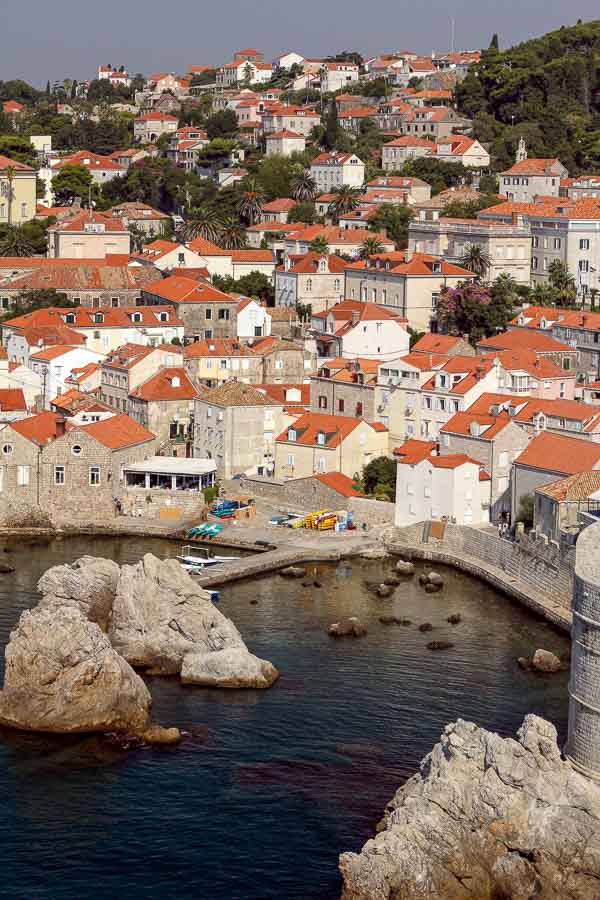
In the late 16th Century, the Ottoman Empire was expanding into Europe. To create a buffer zone, the Hapsburg Empire, which ruled over much of the Balkan states, encouraged Serbs to settle in the small stretch of land along today’s Croatian-Bosnian border.
This further stirred up the existing religious and ethnic mix.
By the late 1600s, the power of the Ottoman Empire had waned and more of the Balkan states were subsumed into the Hapsburg Empire.
With the end of the First World War in 1918 came the dissolution of the Hapsburg Empire, and the formation of the new Kingdom of Serbs, Croats and Slovenes. Eleven years later, this kingdom was renamed Yugoslavia, with further centralisation of government under a royal dictatorship.
In 1941, Nazi Germany invaded Yugoslavia and formed a “Greater Croatia”, absorbing most of Bosnia and western Serbia. In their quest to create a Catholic, all-Croat republic, the brutal fascist puppet government installed under Ante Pavelic caused hundreds of thousands of people to lose their lives.
The aftermath of WWII was a better time.
Under the leadership of President Tito, Yugoslavia (version two) brought together Serbs, Croats, Bosnian Muslims, Albanians, and Slovenes in an uneasy alliance. The threat of tough jail sentences kept separatism and ethnic nationalism in check.
However, the death of Tito in 1980 was the match that lit the smouldering religious, ethnic and nationalistic powder keg. The gloves now off, the individual republics started to assert their desire for independence, culminating in declarations of independence in Croatia and Slovenia in 1991.
The rest, as they say, is history.
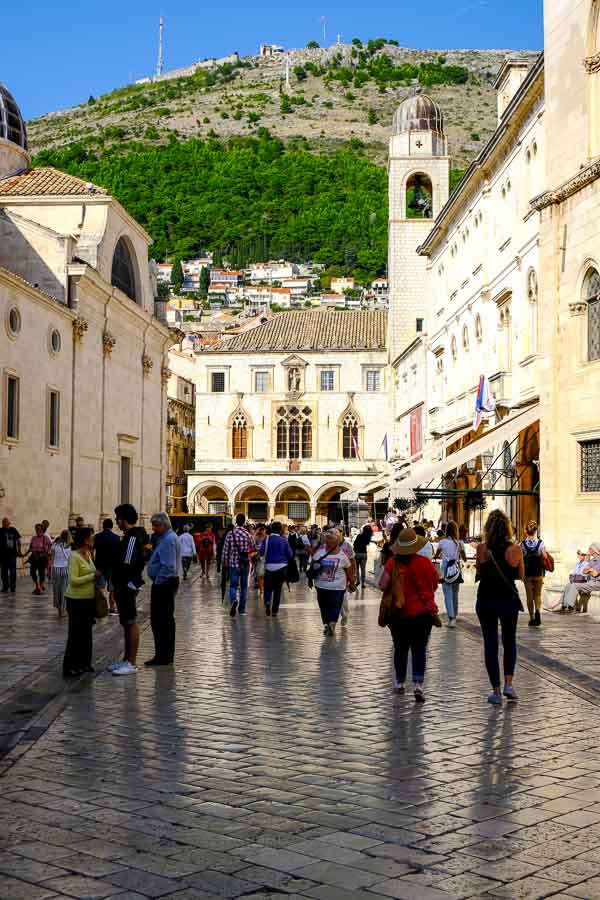
The Siege of Dubrovnik
Whistle-stop history lesson over, we walked across the cheese-white limestone cobbles of the Placa (Stradun), worn to a marble-like sheen by the passage of time, to the so-called War Corner.
Here, Dubrovnik’s excellent War Photo Limited showcases war and conflict photojournalism chronicling recent and ongoing regional and global conflicts).
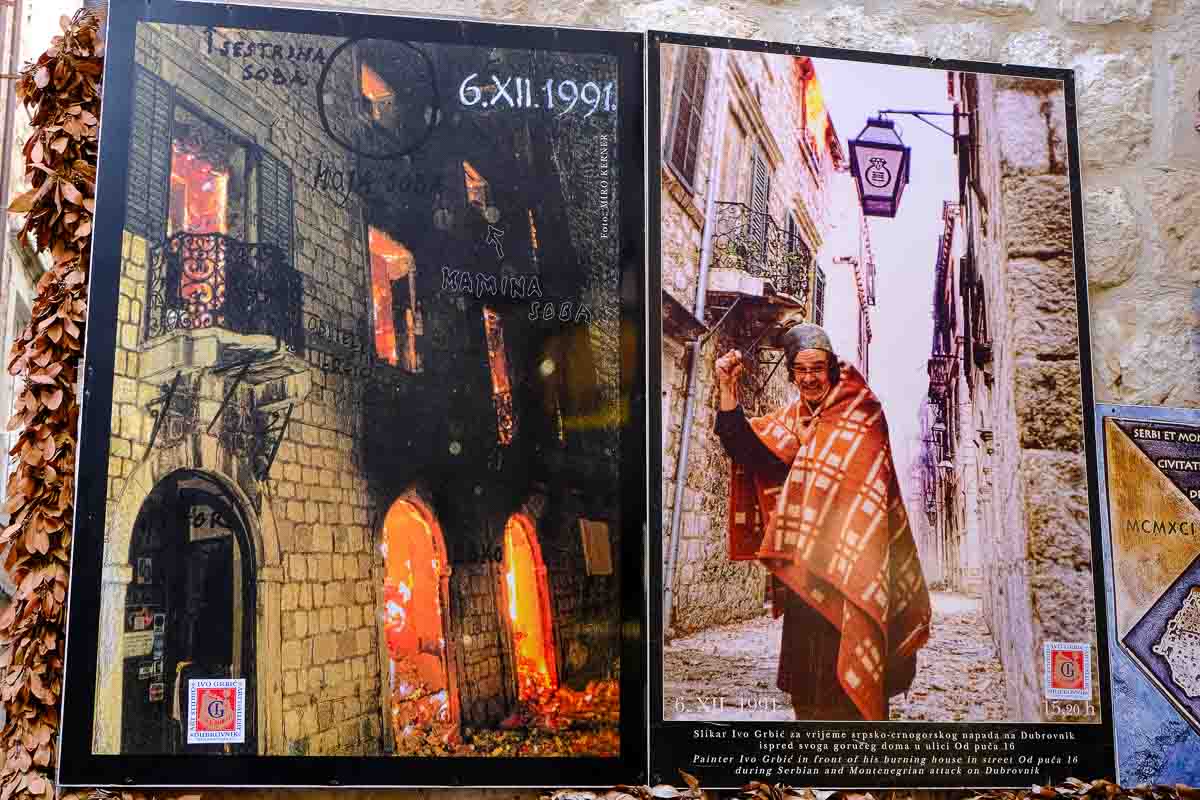
The city of Dubrovnik was the stage for a prolonged siege during the Croatian War of Independence.
In November 1991, The Yugoslav People’s Army launched an attack on Dubrovnik, raining down mortar shells and missiles on its lustrous streets. Dubrovnik was defended by mostly volunteer soldiers who were poorly armed.
As we continued our walk past Dubrovnik’s enticing alleys, Milka waved cheerily to a passing friend who lived through the Siege of Dubrovnik.
See my friend there? He had to dodge snipers to get to his karate class. My biggest problem when I was ten was being forced to eat broccoli.
By the end of the eight-month siege of Dubrovnik, over two-thirds of Dubrovnik’s buildings were damaged and eight palaces were destroyed.
Evidence of the War in Dubrovnik
Devastated several times by earthquakes, rebuilding is something that Dubrovnik is good it. The city’s restoration has been so meticulous that, at first glance, you might never know that there had been a war here.
Dubrovnik’s magnificent city walls have been restored, its burnt stone buildings repaired and scrubbed clean. It is difficult to distinguish between the original buildings and those that rose from the rubble of the war.
But if you look closer, there are tell-tale signs that all is not as it seems. The patchwork of old and new is best revealed by Dubrovnik’s rooftops.
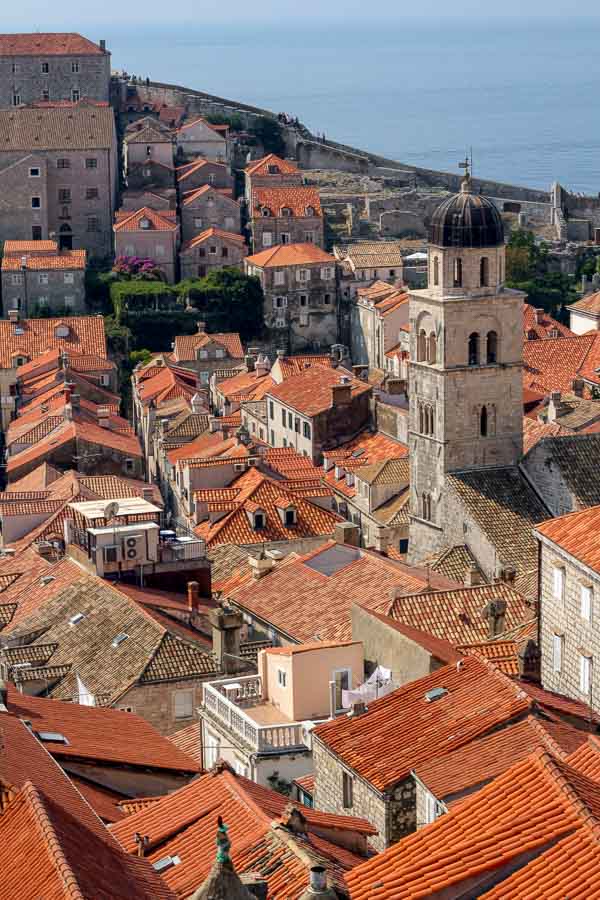
At first glance, they seem perfectly in keeping with the old town’s character, their terracotta red and orange tiles crowning its splendour. But on closer inspection, you realise that the lighter-coloured tiles are repairs made during the city’s restoration. Brightly coloured sticking plasters over its wounds.
The scars left by bullets and shrapnel are also pointed reminders of the conflict, as are plaques of remembrance on houses in many of the old town’s streets.
Taking a walk along Dubrovnik’s city walls reveals the scars that may not be evident from street level, and information panels help you identify the newer roof tiles.
The Defence of Dubrovnik
To learn more about the defence of the city, visit the Napoleonic Fort Imperial overlooking Dubrovnik, home to the Museum of Croatian War of Independence. Housed in dank cellars, an extensive collection of photographs, posters, weaponry and other artefacts gives you a sobering insight into the battle for Dubrovnik.
The final stop on our war walk in Dubrovnik was the Memorial Room of the Defenders of Dubrovnik in Palaca Sponza. This understated but sobering reminder of the Siege of Dubrovnik displays photographs of those who perished whilst defending the city.
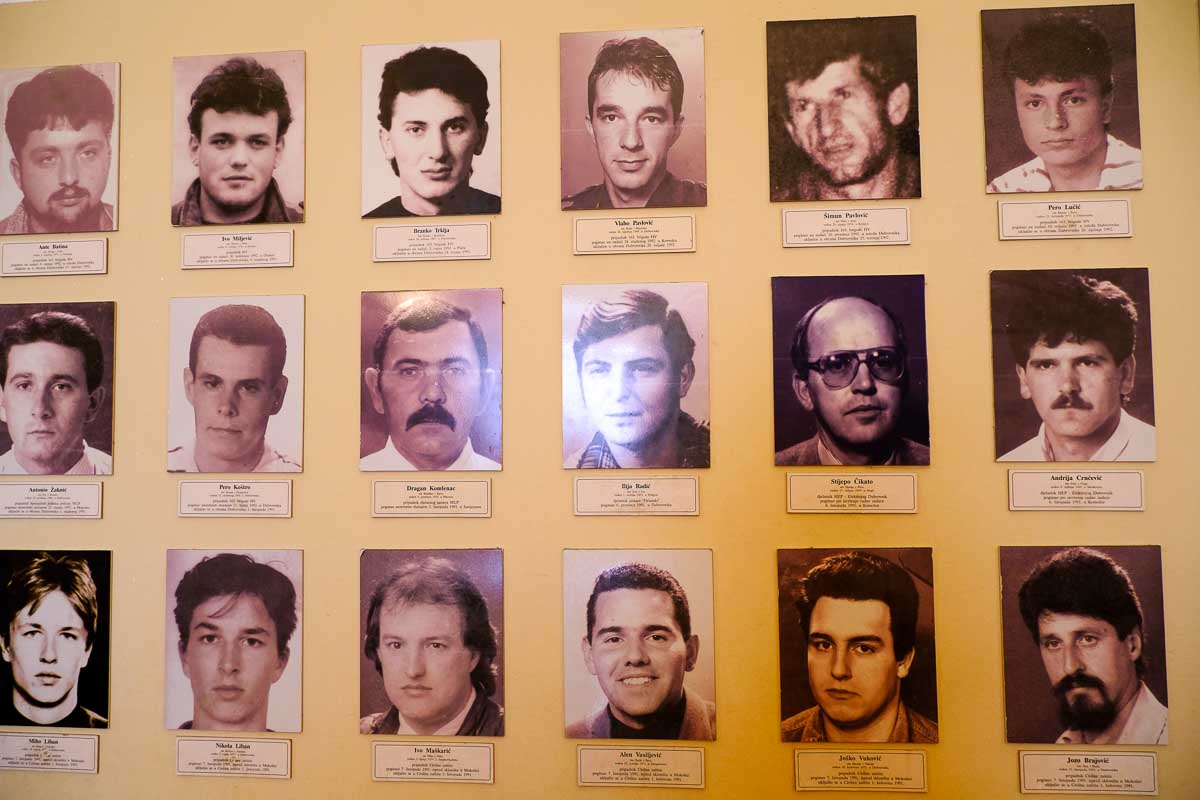
A space to remember and time to reflect.
Dubrovnik: A Scarred Beauty
Dubrovnik’s brazen beauty pulls you in. Its history, its complexities and its contradictions make you linger.
The city’s recent conflict cannot be described in simplistic religious or ethnic terms and the blame laid at the door of one or two events. Instead, the roots of this conflict are far more complex and have been fertilised over hundreds of years.
Although time and money have restored the old town of Dubrovnik to its former glory, the tragic war has left a trace in its fabric. Scars are everywhere, on its architecture and its people.
But these scars are healing. Dubrovnik has been reborn in stone and spirit, which is a message of hope to all.
How I Visited Dubrovnik on a Cruise
I visited Dubrovnik on an Adriatic Sea cruise from Venice to Greece on MSC Sinfonia. The ship was in port from 1 pm until 8 pm.
Cruise ships berth at the Old Harbour, 3 km from the old town. Some cruise companies may provide a free shuttle bus; others don’t.
I reached Dubrovnik’s old town from the cruise port by public bus. Frequent city buses (1, 1a, 1b, 3) leave from the main road outside the bus station.
Buy your ticket from the kiosk inside the bus station. The bus will drop you off at the route’s terminus at the Pile Gate. The journey time from the cruise port to Dubrovnik’s old town is around 15 minutes.
If you have found this article helpful, take a look at my guides to the other stops on this Adriatic Sea cruise:
- Off the Beaten Path in Split, Croatia
- Exploring Diocletian’s Palace in Split, Croatia
- A Day in Urbino: A Renaissance Gem
- Should You Visit Santorini on a Cruise?
Finally, if you are a cruise rookie, I also have advice on booking your first cruise and choosing cruise staterooms, including solo cabins for single cruisers.
Happy travels!


About Bridget
Bridget Coleman has been a passionate traveller for more than 30 years. She has visited 70+ countries, most as a solo traveller.
Articles on this site reflect her first-hand experiences.
To get in touch, email her at hello@theflashpacker.net or follow her on social media.
